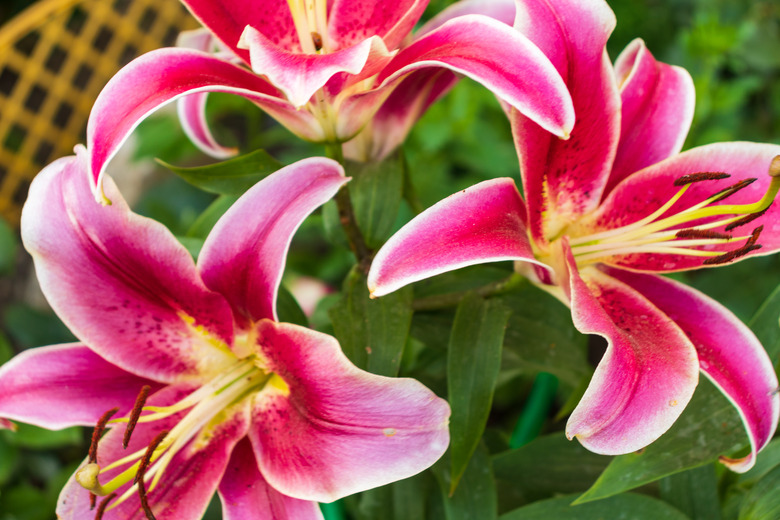How Fast Do Lilies Multiply?
We may receive a commission on purchases made from links.
With its elegant flowers in gorgeous shades, a lily looks like one of those hard-to-grow plants that require more work than the average gardener wants to invest. But nothing could be further from the truth. True lilies are bulb plants that not only grow back year after year from the energy stored in their bulbs but also create new bulbs along the way. There are a handful of basic species and an untold number of hybrids and cultivars, providing blossoms from early summer through fall.
Tip
True lilies are bulb plants, storing their energy in their bulbs in winter, which allows them to bloom again year after year. When they have energy left over, they create new bulbs as well, but the timing depends on both the species and the growing conditions.
Meet the True Lilies
Meet
the True Lilies
Lilies are beloved for their elegant, trumpet-shaped flowers that perch on top of erect stems. All true lilies are in the genus Lilium. Many plants that are called lilies, such as calla lilies, are not actually lilies at all.
Planted in autumn, the onionlike bulbs of true lilies produce summer-flowering plants year after year. Each blossom has six petallike tepals and long, narrow leaves.
There is more than one species of true garden lilies. Asiatic lilies are the first to bloom in early summer, with flowers in many gorgeous colors appearing on relatively short stems. If you want that strong, sweet fragrance, opt for Oriental lilies that flower as the Asiatics are fading. These grow on 4-foot stems. Trumpet lilies offer multiple small blossoms with a pleasing scent. Hybrids and cultivars abound.
Grow True Lilies
Grow
True Lilies
Despite their exotic beauty, lilies are very easy to grow if you follow a few simple guidelines. Lily bulbs should be purchased in autumn and planted quickly, at least a month before the first frost date. For container plants, you can wait until early summer and even grow them indoors. All lilies need six to eight hours of sun.
Although a lily bulb only needs to be planted at a depth equal to three times its length, you'll need to dig deeper to prepare the soil. Work well-drained soil to a depth of 12 to 15 inches, adding in mature organic compost to encourage deep roots. Prepare the planting holes, set in the bulbs tip-side up, and fill in the soil. Water well at planting and throughout the growing season. Don't remove the leaves until they have wilted since they will be helping to refill the bulbs with energy for the following year.
Propagate Your Lilies
Propagate
Your Lilies
Most gardeners grow lilies from bulbs, but the flowers can be propagated by the seeds they produce as well. They are fertilized by pollen transferred by wind or insects and ripen in seed pods. As the lilies die back, the seed pods fall to the ground, and new plants can grow. It will be several years before they form bulbs and bloom.
Lilies can also multiply by producing additional bulbs if they have extra energy. These new bulbs start out as tiny baby bulblets but increase in size every year. Eventually, they siphon off nutrients from the parent plant, and flowers decline unless the gardener separates out the new bulbs and replants them at a distance from the parents. There is no way to predict the timing of bulblet development since this varies according to the species and available nutrients. Some bulb clumps must be split after a few years of growth, but sometimes, they can grow in blooming clumps for many years.
